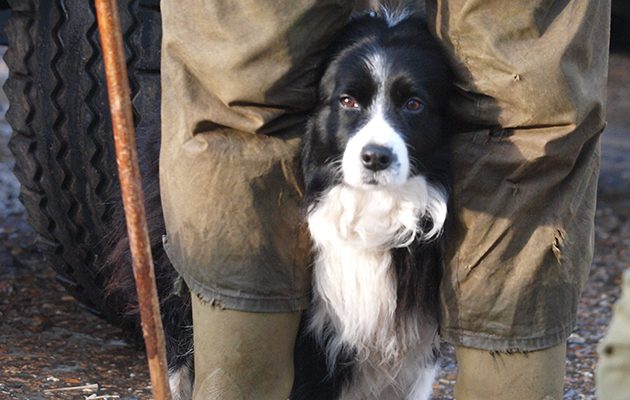Every sort of dog has been in the beating line - but what breed should you choose for the best beating dog? David Tomlinson recalls some of the best - and worst - that he has encountered
From rottweillers to poodles, David Tomlinson has encountered just about every breed of dog in the beating line. So which makes the best beating dog? He weighs up some of the best – and worst – that he has encountered.
If you are considering adding a pup to the pack, discover how David Tomlinson settled on his next spaniel. Read best spaniel breed: a new companion.
THE BEST BEATING DOG
Poodles, rottweillers, cockerpoos, collies, Jack Russell terriers… over the years I’ve seen every sort of dog working in the beating line. Proper shooting dogs, by which I mean spaniels, retrievers and HPRs, may be in the majority but to be an efficient beating dog you don’t need field-trial champions in your pedigree. In fact, the opposite is true, as high-powered gundogs can become too hot to handle when beating.
The requirements of a good beating dog are few. The first and most important is an ability to work close to you all the time, plus reliable recall. It helps if a dog can use its nose and hunt, but that’s not essential. Many good beating dogs simply walk steadily with the line and don’t get too carried away with all that hunting nonsense, leaving it to the spaniels. Resisting the temptation to chase whatever might be flushed is also essential: there are few things more embarrassing then seeing your faithful hound disappearing over the hill or through the line in pursuit of an unexpected hare or deer.
If your beating dog is to be employed on a smart shoot, then it should work silently. Giving tongue is frowned upon. However, this isn’t the case with more modest shoots. My first springer spaniel invariably barked when she flushed a bird. As we didn’t have a lot of game this gave a handy warning to the standing guns to be on their mettle. What was important was that she never barked at anything other than a pheasant, so the armed members of the party knew that they could rely on her.
A decade later, I had a pair of spaniels, mother and daughter, that were silent hunters, which was much more satisfactory. However, the older bitch’s litter brother used to come beating on the same shoot and he was noisy. His excited barking would invariably summon my two, who would gallop off to help him. In the middle of the drive this wasn’t a major problem, as they would soon come back, but it was frustrating at the end, when I would emerge from the beat dogless.
Retrieving dogs are not an asset in the beating line, as the temptation to retrieve can overcome even the best-trained of animals. I’ve seen an immaculately trained keeper’s dog absent itself from the beating line towards the end of the drive to go picking up. The lure of a retrieve is often overwhelming. Beating dogs on grouse moors are usually adept retrievers, often picking up many more birds around the butts at the end of a drive than the official picking-up teams, but such behaviour is not generally considered acceptable on a lowland shoot.
PHEASANT AND PARTRIDGE SHOOTS
If you are picking up on a pheasant or partridge shoot, it can be exceedingly irritating if the beaters’ dogs appear from nowhere and start to retrieve the birds you have marked. This has happened to me on a number of occasions but was most annoying when I was training a young spaniel. The shoot was small, so the number of retrieves we could expect were few, but on one drive there were two marked retrieves for me to send the dog to. Frustratingly, before the drive had finished a large black labrador burst out of the wood and snatched both birds, leaving my spaniel with nothing to do.
There can be other drawbacks to working a retrieving dog in the beating line. On one occasion, I was working the spaniels on a shoot run by members of the local hunt. There was a motley assortment of dogs in the beating line, including a pair of thuggish hunt terriers. Halfway through the drive they pegged (mugged might be a better description) a pheasant, which they savaged. My spaniel brought me the tattered corpse. If I had produced it at the end of the drive it would probably have been assumed that my dog had done the damage so, somewhat guiltily, I stuffed it down a rabbit hole.
Pegging game is a serious problem with beating dogs. Even the best-trained dog will occasionally peg, but serial peggers are a menace and deservedly hated by keepers. I’m unaware of a cure, so the only solution is not to take a pegger beating.
Quite what the best breeds are for beating dogs is debatable. I’ve been impressed with border collies, as they are usually calm, quiet and obedient, rarely showing any inclination to chase or pursue game. Other non-sporting breeds that are not genetically programmed to hunt can also be satisfactory. Last season I came across a duo of cockerpoos that were excellent, being both biddable and enthusiastic. Their sire was a working cocker.
Of the proper gundogs, there are no better beaters than spaniels, as they will enter even the thickest of cover. However, they do require constant handling, which is often difficult when you are also fighting your way through the brambles. Both Clumbers and Sussex spaniels are classic beating dogs, and usually less hyper than cockers or springers.
I’ve long suspected that the beaters get the most enjoyment out of a shooting day. The same is certainly true of their dogs, too, while many shoots reward beaters with dogs with an extra fiver, an added incentive to take the dog out for the day. Have fun!





